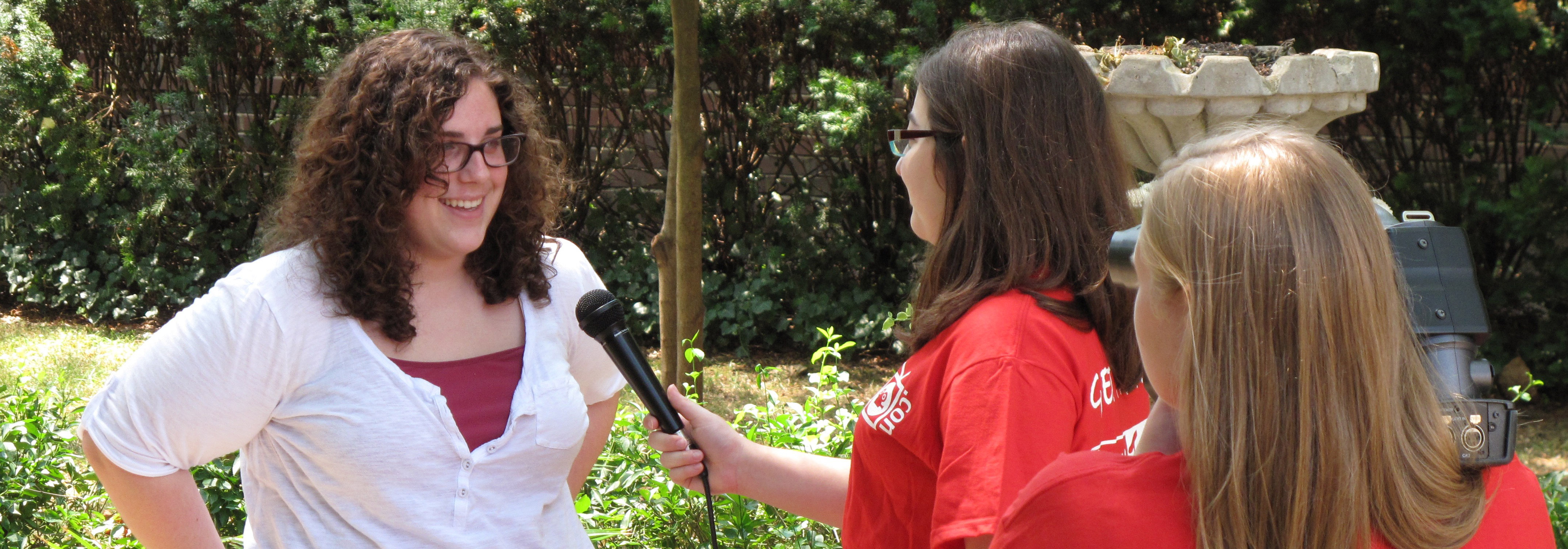Mini-lessons for advisers when news cycles are slow: Proper microphone techniques

Audio is just as important, if not more, than the video.
I believe in this motto 100%.
Imagine someone telling you their life story. It’s moving, powerful, inspirational. Yet, your microphone didn’t work as you were recording. Ugh! I missed it?!
If a video story has beautiful cinematography, color and light, and has audio I’m supposed to be able to hear but can’t? I’m out. Click. Gone.
Now, if a video story has a bit of a shaky cam, maybe is a little out of focus or too dark, yet the audio is crisp, deep and rich, I’m in. At least for awhile. I’ll lean in and listen to that life changing story, even if the look of the video isn’t perfect.
In this mini-lesson, students will learn about some simple do’s and don’ts about proper microphone technique and practice the main ways to leverage sound for their story.
Objective
Students will learn about proper microphone techniques for their video shoots, plan for utilizing different types of microphones to their advantage for their stories, and finally go out to practice on their own.
The mini-lesson
1. Begin by having your students recite “audio is just as important, if not more, than the video.” Seriously. They must say this to believe it. Done? Cool, now read the article.
2. Next watch the following video of what NOT to do. I see this kind of recording way too much. Hopefully when your students see and hear how bad this recording is, they will avoid recording this way.
3. Now watch the following video tutorials to continue to see what to do and what to avoid when using handheld microphones, shotgun microphones, and wireless lavalier microphones.
Microphone Demo video above credit to Michael Hernandez and Mustang Morning News.
Task
Now it’s time for your students to go out and practice on their own.
1. Select a partner in class to practice.
2. Set up your interview composition shot, using the rule of thirds, and place the microphone a few inches away from subjects mouth if it’s a shotgun or handheld mic. If it’s a lav mic, follow the rules from the lav mics video.
* Try to compose your shot so the microphone isn’t visible. However I don’t mind seeing the microphone in the shot if that’s the best you can do. I want to hear the audio. But, I don’t not want to see the reporters arm or hand in the shot. Compose the shot so there is NO reporter hand or arm visible. When I see the the arm of the reporter in the shot holding the microphone, I call this the “Zombie Arm.” And nobody wants to see the zombie arm.
3. Record your partner saying their name & spelling it. This first recording will have the mic plugged in.
4. Now record your partner saying their name & spelling it, but have the microphone unplugged.
5. Now practice that you don’t have a microphone or the microphone isn’t working. Set up the camera one to three feet away from the subject and record them saying their name and spelling it using the in-camera microphone.
6. Play back all of the recordings to identify the difference in sound.
7. Travel around the school to different locations throughout where the natural sound may vary. For example, go to the swimming pool of your school. What does the ambient sound do to your recording? Go outside on a windy day. Record in or near your cafeteria during lunchtime. Ultimately, students can practice in all of the different environments they may find themselves when trying to record interviews for their stories.
Result
By practicing and planning to capture the best possible audio interviews for your stories, students will begin to learn the importance of audio in telling stories and hopefully start incorporating more of these techniques learned in this lesson.
Future video mini-lessons
Be on the lookout for the last in our mini-lessons series.
Up next
Interviewing



